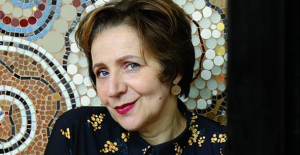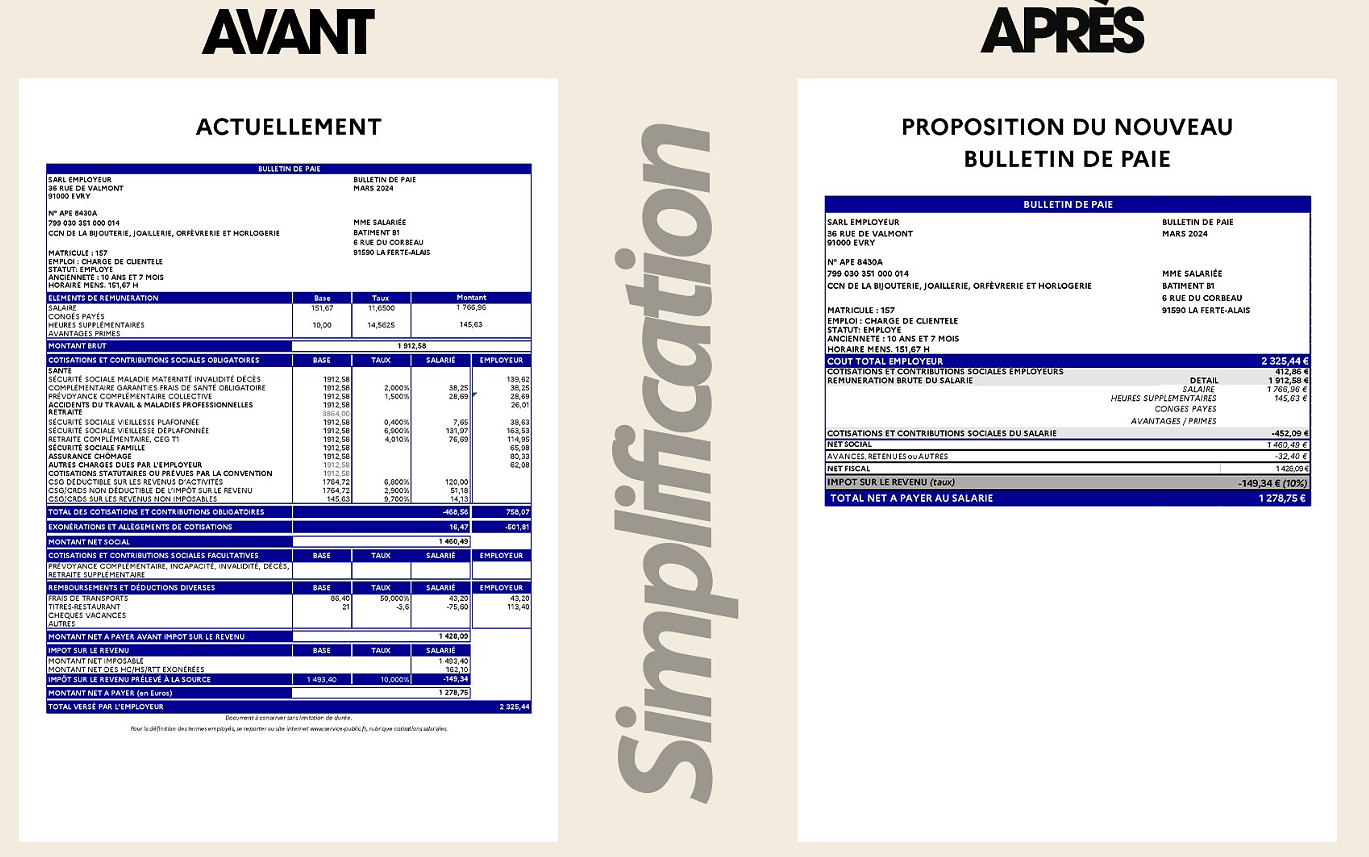On a green Spickel Meadow in Zurich Au the Tilla – Tiny Villa – from Amelie Böing and René Travels. With your one-year-old son, and a wolf dog, the family living on 33 square meters. What looks small, feels inside greater. The decor is simple, but playful. In the garden bees buzz, next door trees are in bloom.
A living dream for more and more people are interested in. Already there is the Association of small forms of housing with 760 members. How many Tiny Houses – among other small forms of living in Switzerland were, could not be quantified, says Board member Jonas Bischofberger.
Islands, in the silence
How useful is this form of accommodation? Is it sustainable? It is socially acceptable? Or it aggravates the urban sprawl and the threatened culture of the country? Stefan Wide, researcher at the Gottlieb-Duttweiler-Institute in the area of Housing, infrastructure and the environment, says: "The Tiny House these Considerations be laid to sustainability immediately in the pan." Quickly, questions would arise as to whether the residents tried seriously to live sustainably, or is this just set the tone. About a pension Fund to build a new office or residential buildings, this is not the case, although the critical questions would be far more appropriate.
Amelie Böing and René Traveling in their Tiny House in Au, ZH. (Video: Aleksandra Hiltmann, Anja Stadelmann)
This could be due to the fact that the Tiny House social visions of a sustainable life are associated. Wide houses in Micro a counter-trend to the urban, fast paced life. "You want to move back to the nature, the peace, the silence."
I can handle it most of the time a Vision for individuals and not for Collectives. Radical expresses the Hans Widmer. The pioneer for new forms of living can find the smallest houses social beelendend. They were for the "hermits, misanthropes, Introverts, and Ökofakire".
"Tiny" is tiny – but has space for everything, like looks show in the Tilla. Photo: Samuel Schalch
Hans Widmer is an advocate of high-density building, and community living. In Tiny Houses, he criticized the fact that they claimed a lot of space, not because of the living space per Person was, in fact, lower than the Swiss average – but because of the turnaround. The Tiny House will be installed at a remote place, it would result, moreover, long work and Shopping trips. This would be best handled with a car, anything other than organic.
Also for Wide is not that a Tiny House is by Definition a sustainable way of living. "Nothing beats a large-scale Construction of modest apartments in the city. The trails are all extremely short, the space is optimally utilized and shared." With the form of living micro living an urban Alternative to the Tiny House, for example, is currently emerging. Living in an area of about 30 square meters, the floor plans, everything you need – such as Sleeping, kitchen or bathroom – for a stand-alone Housing. However, this happens not only on a fallow area, but in the large block of flats with many neighbors. The Trend to limit, in these complexes.
Alone, and yet urban
The difference is that the Tiny House give this a better image than a small apartment in the city, Yes the iconic image. "We think of earlier, to the tents in the outdoors and the camp fire romance. We need such images, if we want to imagine the future."
and Widmer the smallest house can Wide, despite reservations, see something, and see in him not a counter-movement to the community, crowded Places, is gaining in importance. Tiny Houses would provide space for people who needed to be alone, and the urban density stress shying away, but still in an urban community wanted to live, said Hans Widmer. So you could use a Tiny House in the yard of a cooperative, to fill gaps, backyards. The opportunity to live temporarily in a place to be, a big advantage of the Tiny House, which is designed to be mobile.
Stefan Wide, Tiny sees the Houses as part of a larger Trends, at the residential well-differentiated forms. "In the future, it will not only give today's predominant Form of the 3 - to 4.5-room apartment for the father-mother-children family." Life designs beyond the traditional family model to be on the increase: from Single person households to multi-generational residential community.
the future, with clusters
René Travels and Amelie Böing even go so far that you want to develop to Live in the Tiny House is a common living form. Because, especially in suburban and rural areas forms of housing for community Living, such as cluster flats are not very widespread, even more so. Therefore, they have founded the Association "Tilla – Sustainable living". Your goal is to develop a residential option for up to ten people together can life – energy-self-sufficient, modular and flexible.
you are in spite of Living in the Tiny House is still in the community in which they lived previously, to share, among other things, a washing machine and clothes or large orders for food. Social and economic sustainability for the young family as well as a living concept as well as ecological.
Amelie Böing and René Travels in front of the entrance of your mini house. Photo: Samuel Schalch
Environmental challenges for Tiny Houses, especially energy self – sufficiency over the entire cycle of a year, solutions for water treatment, the placement of and access to public transport, as well as the Consideration that the saved energy would not apply elsewhere, can be re-sealed. This Kristina Orehounig, Director of the "Urban Energy Systems Lab, says," at the Swiss Federal laboratories for materials testing and research (Empa).
These criteria, the Tiny House of Travels and Böing met to a large extent. It is energy self-sufficient and almost climate-neutral, thanks to solar panels and their own wastewater treatment plant. The wood and other building materials come from Austria, the interior floor of the house is made from reclaimed wood from construction sites, the wool insulation made from sheep. In front of the house are bicycles, with which one is fast at the station. Air travel is no longer an issue for the young family.
mass suitability questionable
The accusation that his family contributes to urban sprawl and the culture of the country destroy, the 33-year-old Travel do not apply. As in the city, a small, mobile house could also add in more rural areas well into the gaps. The interim use of land is also an advantage for biodiversity. Because no soil would be removed (the Tiny House needs no Foundation), on the property. To understand resource cycles and recover useful parts of the nutrients on-site, such as from an in-house water treatment, starch, therefore, even the biodiversity. The family prepares your swing extra for native plants and insects.
the Tiny House in the future to the masses, don't believe Orehounig, however. To do this, there is simply too little space. As a whole over the whole life cycle is considered, it is preferable to use only the existing stock of houses and apartments and to renovate energetically, before the addition is built. "The remediation rates are currently very low and not sufficient to achieve the objectives of the energy strategy."
living in a Space-saving, however, is useful. The inhabited area per Person has grown over the last decades. In order to reduce the energy inefficiency of buildings, are not expected to increase the inhabited areas stronger. "Concepts such as the 2000-Watt-society are strongly limited living space-dependent," says Kristina Orehounig.
Legal hurdles
René Travels explains how the 2000-Watt-society slopes of the current building legislation. Especially in the case of small forms of housing, it is difficult, in the construction of the statutory provisions to be complied with. For example, will not be measured, the total energy consumption of a residential unit per Person, but the thickness of the walls. The efforts, under a 2000-Watt life consumption to be correspondingly high – not because of the resignation, but because of the bureaucracy. Thus, one of the principal objectives of the Association of small forms of housing, to establish the Latter in Switzerland, as recognized forms of living and in law.
in the Meantime, the small family sitting in the garden in front of your Tiny House. Traveling has just put up a black shield in front of the wooden fence. "Load here for free of your E-Bike" – so the family shares the excess solar energy. For passers-by it has attached to the lower end of the fence is a panel with information about your house. In particular, the children of the nearby school were very interested. And the family does not want to dream your dream of sustainable Living alone. Currently, you are looking for a stand and like-Minded people for your new project, the mobile cluster settlement.
(editing Tamedia)
Created: 14.04.2019, 19:32 PM

 His body naturally produces alcohol, he is acquitted after a drunk driving conviction
His body naturally produces alcohol, he is acquitted after a drunk driving conviction Who is David Pecker, the first key witness in Donald Trump's trial?
Who is David Pecker, the first key witness in Donald Trump's trial? What does the law on the expulsion of migrants to Rwanda adopted by the British Parliament contain?
What does the law on the expulsion of migrants to Rwanda adopted by the British Parliament contain? The shadow of Chinese espionage hangs over Westminster
The shadow of Chinese espionage hangs over Westminster Parvovirus alert, the “fifth disease” of children which has already caused the death of five babies in 2024
Parvovirus alert, the “fifth disease” of children which has already caused the death of five babies in 2024 Colorectal cancer: what to watch out for in those under 50
Colorectal cancer: what to watch out for in those under 50 H5N1 virus: traces detected in pasteurized milk in the United States
H5N1 virus: traces detected in pasteurized milk in the United States What High Blood Pressure Does to Your Body (And Why It Should Be Treated)
What High Blood Pressure Does to Your Body (And Why It Should Be Treated) “I’m interested in knowing where the money that the State takes from me goes”: Bruno Le Maire’s strange pay slip sparks controversy
“I’m interested in knowing where the money that the State takes from me goes”: Bruno Le Maire’s strange pay slip sparks controversy Despite the lifting of the controllers' strike, massive flight cancellations planned for Thursday, April 25
Despite the lifting of the controllers' strike, massive flight cancellations planned for Thursday, April 25 The right deplores a “dismal agreement” on the end of careers at the SNCF
The right deplores a “dismal agreement” on the end of careers at the SNCF The United States pushes TikTok towards the exit
The United States pushes TikTok towards the exit Saturday is independent bookstore celebration
Saturday is independent bookstore celebration In Paris as in Marseille, the Flames ceremony opens to fans of rap and hip-hop
In Paris as in Marseille, the Flames ceremony opens to fans of rap and hip-hop Sale of the century for a mysterious painting by Klimt, in Austria
Sale of the century for a mysterious painting by Klimt, in Austria Philippe Laudenbach, actor with more than a hundred supporting roles, died at 88
Philippe Laudenbach, actor with more than a hundred supporting roles, died at 88 Skoda Kodiaq 2024: a 'beast' plug-in hybrid SUV
Skoda Kodiaq 2024: a 'beast' plug-in hybrid SUV Tesla launches a new Model Y with 600 km of autonomy at a "more accessible price"
Tesla launches a new Model Y with 600 km of autonomy at a "more accessible price" The 10 best-selling cars in March 2024 in Spain: sales fall due to Easter
The 10 best-selling cars in March 2024 in Spain: sales fall due to Easter A private jet company buys more than 100 flying cars
A private jet company buys more than 100 flying cars This is how housing prices have changed in Spain in the last decade
This is how housing prices have changed in Spain in the last decade The home mortgage firm drops 10% in January and interest soars to 3.46%
The home mortgage firm drops 10% in January and interest soars to 3.46% The jewel of the Rocío de Nagüeles urbanization: a dream villa in Marbella
The jewel of the Rocío de Nagüeles urbanization: a dream villa in Marbella Rental prices grow by 7.3% in February: where does it go up and where does it go down?
Rental prices grow by 7.3% in February: where does it go up and where does it go down? Sale of Biogaran: The Republicans write to Emmanuel Macron
Sale of Biogaran: The Republicans write to Emmanuel Macron Europeans: “All those who claim that we don’t need Europe are liars”, criticizes Bayrou
Europeans: “All those who claim that we don’t need Europe are liars”, criticizes Bayrou With the promise of a “real burst of authority”, Gabriel Attal provokes the ire of the opposition
With the promise of a “real burst of authority”, Gabriel Attal provokes the ire of the opposition Europeans: the schedule of debates to follow between now and June 9
Europeans: the schedule of debates to follow between now and June 9 These French cities that will boycott the World Cup in Qatar
These French cities that will boycott the World Cup in Qatar Montpellier-Nantes: at what time and on which channel to watch the Ligue 1 match?
Montpellier-Nantes: at what time and on which channel to watch the Ligue 1 match? Ligue 1: Luis Enrique leaves many PSG players to rest in Lorient
Ligue 1: Luis Enrique leaves many PSG players to rest in Lorient Football: Deschamps, Drogba, Desailly... Beautiful people with Emmanuel Macron to play with the Variétés
Football: Deschamps, Drogba, Desailly... Beautiful people with Emmanuel Macron to play with the Variétés Football: “the referee was bought”, Guy Roux’s anecdote about a European Cup match… with watches and rubies
Football: “the referee was bought”, Guy Roux’s anecdote about a European Cup match… with watches and rubies


















